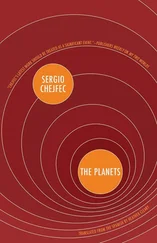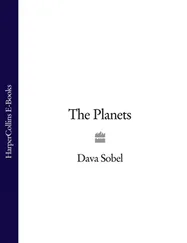1 ...7 8 9 11 12 13 ...16 ‘I can find no reason … for denying that she may be considered the abode of creatures as far advanced in the scale of creation as any which exist upon the Earth.’
Richard Proctor, English astronomer, 1870

© NASA/ARC
A hazy and cloud-shrouded Venus, photographed by Pioneer Venus Orbiter.
Nobel Prize-winning chemist Svante Arrhenius was one of the most renowned scientists to fuel the mythology of what lurked behind Venus’s cover. Like many of the scientists of his era, Arrhenius let his curiosity wander into many different realms, including astronomy, and he hypothesised at length about the Venusian environment. Assuming the clouds of Venus were composed of water, he wrote in his book The Destinies of the Stars that ‘a very great part of the surface of Venus is no doubt covered with swamps’, creating an environment not unlike the tropical rainforests found here on Earth.
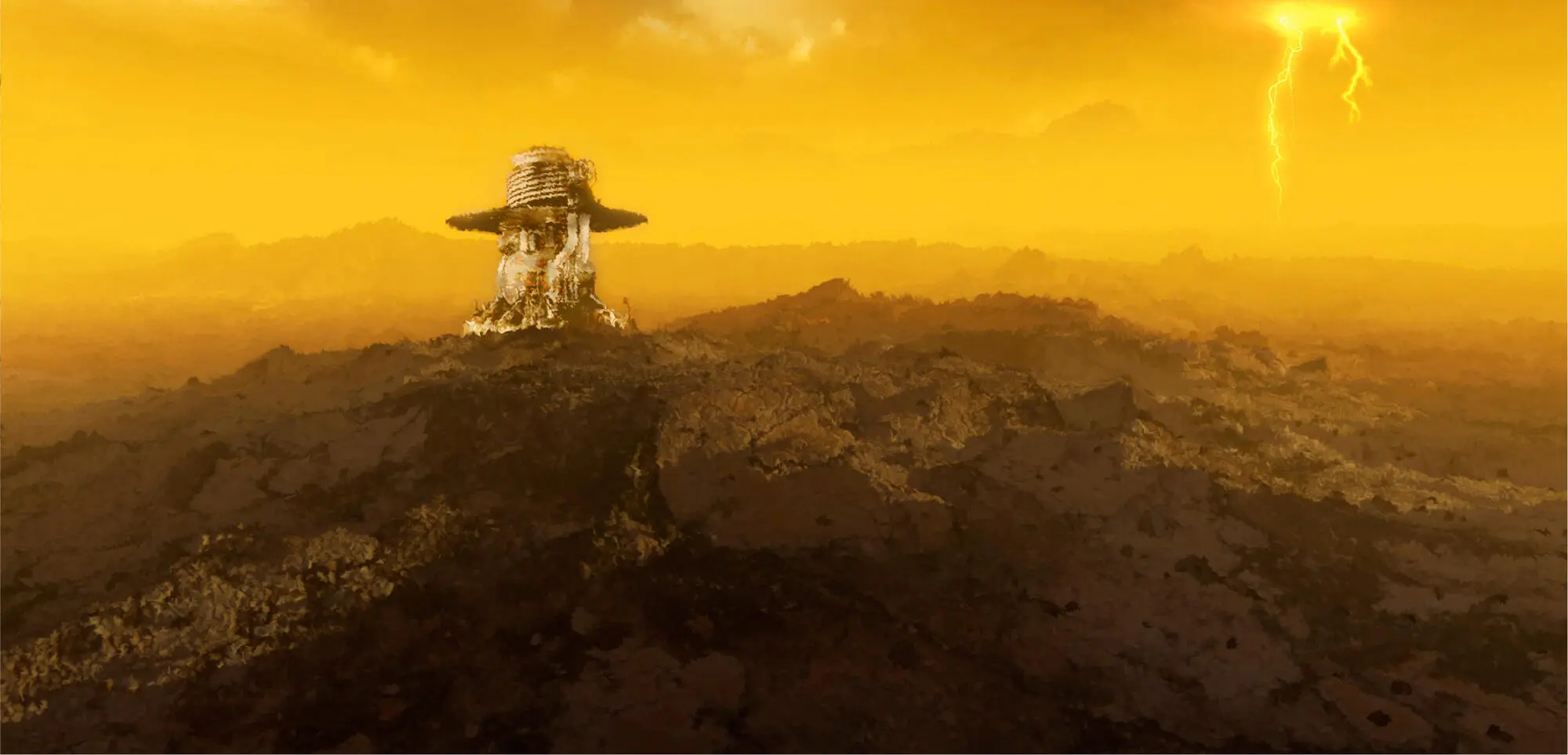
© MARK GARLICK / SCIENCE PHOTO LIBRARY
Artwork showing the successful landing of the Venera 9 spacecraft, which in its 53 minutes on the surface of Venus returned the first ever images of the planet.
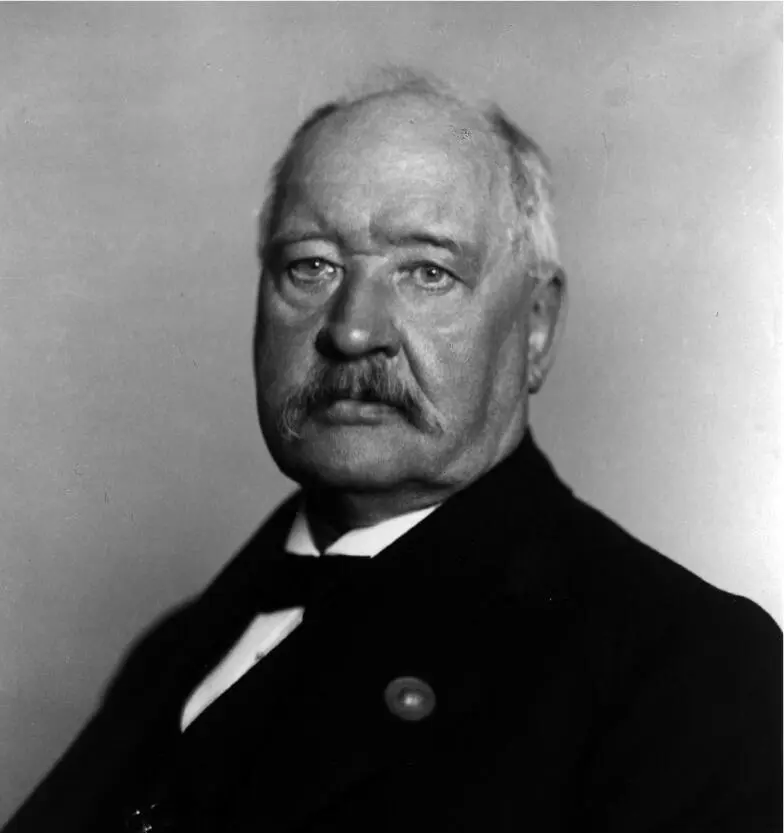
© Science History Images / Alamy Stock Photo
Svante Arrhenius, Nobel Prize-winning chemist
‘Everything on Venus is dripping wet … A very great part of the surface … is no doubt covered with swamps corresponding to those on the Earth in which the coal deposits were formed … The constantly uniform climatic conditions which exist everywhere result in an entire absence of adaptation to changing exterior conditions. Only low forms of life are therefore represented, mostly no doubt belonging to the vegetable kingdom; and the organisms are nearly of the same kind all over the planet.’
Expanding on this picture, he suggested that the complete cloud cover of the planet created a uniformity totally unlike the extremes of weather that define different parts of the Earth. In Arrhenius’s imagination this stable environment, with a consistently uniform climate all over the planet, meant that any life on Venus lived without the evolutionary pressures of changing environments that drive natural selection here on Earth, leaving Venus in an evolutionary limbo akin to the Carboniferous Period. Describing a world full of prehistoric swamps and dank forests, Arrhenius created the perfect canvas for science-fiction writers of the time to conjure up a menagerie of curious life forms lurking beneath the clouds.
Today Arrhenius is far less known for his fertile imaginings on the wildlife of Venus than he is for his work on the climate of Earth. In 1896 he was the first scientist to use basic principles of chemistry to demonstrate the impact that the atmosphere can have, in particular levels of carbon dioxide, on the surface temperature, a process that was called the Arrhenius effect but is now known as the greenhouse effect. An effect that would not only have profound consequences for our understanding of our impact on our own planet, but would also be vital in explaining the true nature of Venus beneath the clouds.
By the 1920s, as ground-based technology improved, we stopped painting the surface of Venus with our imaginations and started filling in the gaps with facts. The first spectroscopic analysis of the planet’s atmosphere suggested that it wasn’t water or oxygen that filled the clouds of Venus, so some thought this hinted at an arid, desert land beneath. Others speculated that formaldehyde filled the air, leading to the belief that Venus was not only a dead planet but a pickled one, too. But come the 1950s the true nature of Venus began to be revealed, as more accurate Earth-based observation suggested the presence of overwhelming levels of one defining gas in the Venusian atmosphere. This was not a planet shrouded in clouds of water and oxygen, nor pickled in formaldehyde, this was a planet engulfed in a blanket of carbon dioxide, and as Arrhenius had demonstrated on Earth, this almost certainly meant that whatever lay beneath the clouds, the heat would be beyond the limits of even the most resilient life forms on Earth. As the first spacecraft were being built to explore our sister world, it was becoming increasingly clear that visiting Venus would be far from easy and she would be far from welcoming.
In the early 1960s, the Soviet Union began a series of missions under the programme name Venera, which attempted to explore the atmosphere and surface of Venus directly for the first time. The initial launches of the Venera programme failed before they had even left Earth’s orbit, but within a couple of years the programme began to slowly see some success.
Venera 1 was successfully launched on 12 February 1961. Designed as a flyby mission, it is thought to have passed within 100,000 kilometres of Venus, but a total telemetry failure on the craft meant that no data was returned to Earth. As far as we know, Venera 1 is still in an orbit around the Sun to this day.
Venera 3 attempted to go a step further and was designed to enter the Venusian atmosphere to take the first direct measurements. However, on crossing the atmospheric boundary the probe’s systems failed and no data was returned as it plummeted towards the ground. All that was left for Venera 3 was the historic position as the first human-built object to crash into another planet’s surface.
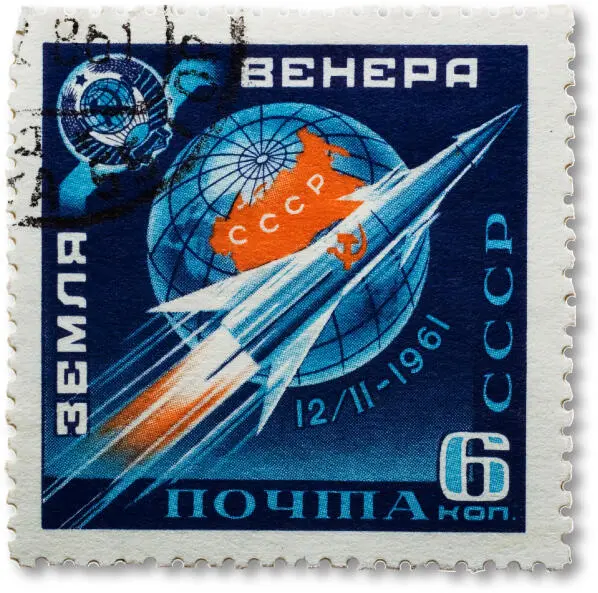
© Shutterstock
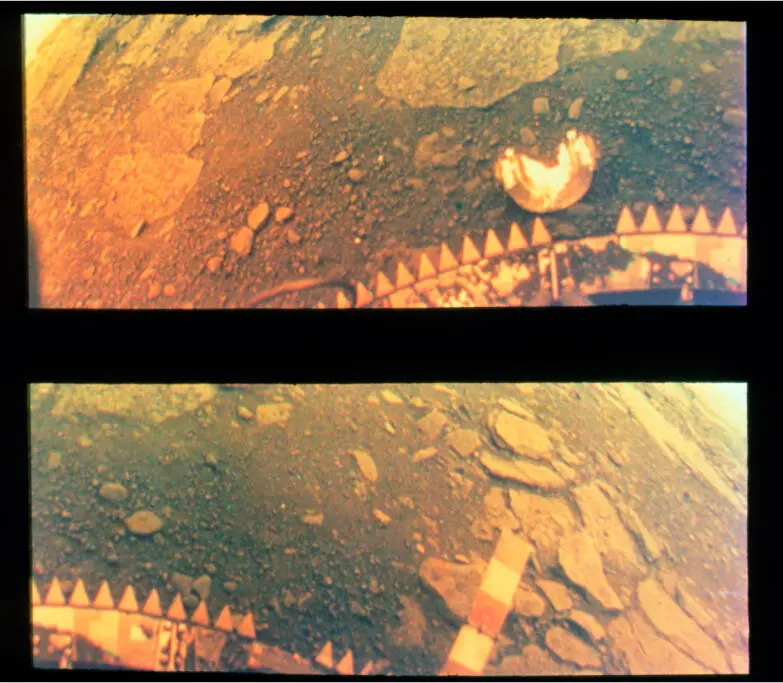
© SPUTNIK / SCIENCE PHOTO LIBRARY
In March 1982, Venera 13 returned these photographs of the surface of Venus, with part of the spacecraft visible in the foreground.
Despite multiple failures, the Soviets didn’t give up and in October 1967 Venera 4 entered the atmosphere of Venus and sent back data supporting the Earth-based observations, revealing for the first time that the blanket of cloud surrounding Venus was made up of primarily carbon dioxide (90 to 95 per cent), 3 per cent nitrogen and just trace amounts of oxygen and water vapour. Venera 4 confirmed beyond all doubt that this was no second Earth: as it descended through the thick clouds, the temperature rose to 262 degrees Celsius, the atmospheric pressure increased to 22 standard atmospheres (2,200kpa) – and this was still 26 kilometres above the surface. As Venera 4 parachuted its way down to the surface it provided data back to Earth while confirming its own imminent death. This was a spacecraft that was not designed to survive the intense pressures and temperatures it was measuring, let alone the lack of the water landing it was designed for. The craft failed during the descent and was lost long before it reached the surface.
Gradually, through the following missions, the Soviet scientists began to overcome each and every challenge Venus put in front of them. Venera 7 was built to survive the most violent of landings, and even though its parachute failed, it made it to the surface intact in 1970 and was able to use its damaged antennae to transmit limited temperature data for 23 minutes before it expired.
Читать дальше






